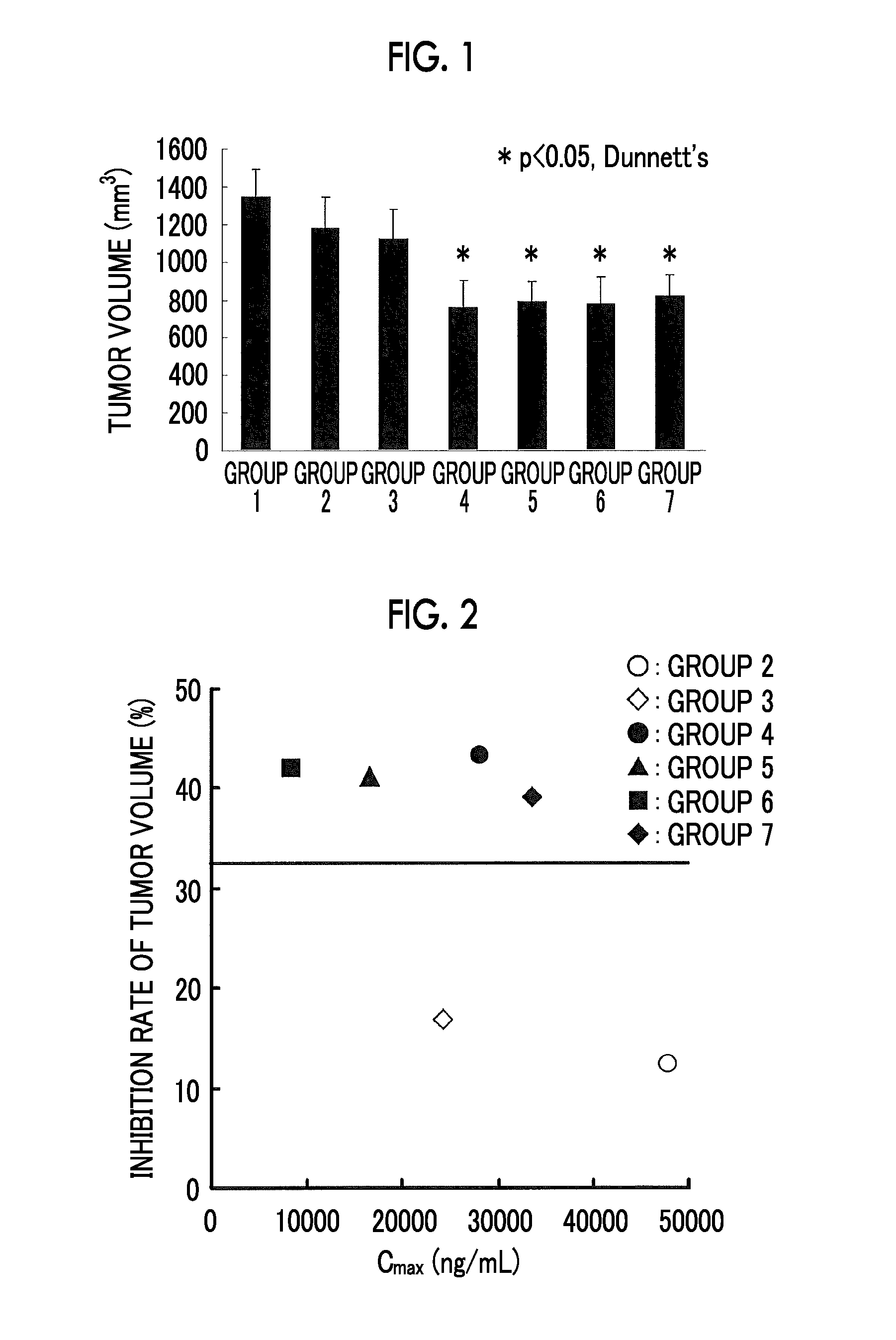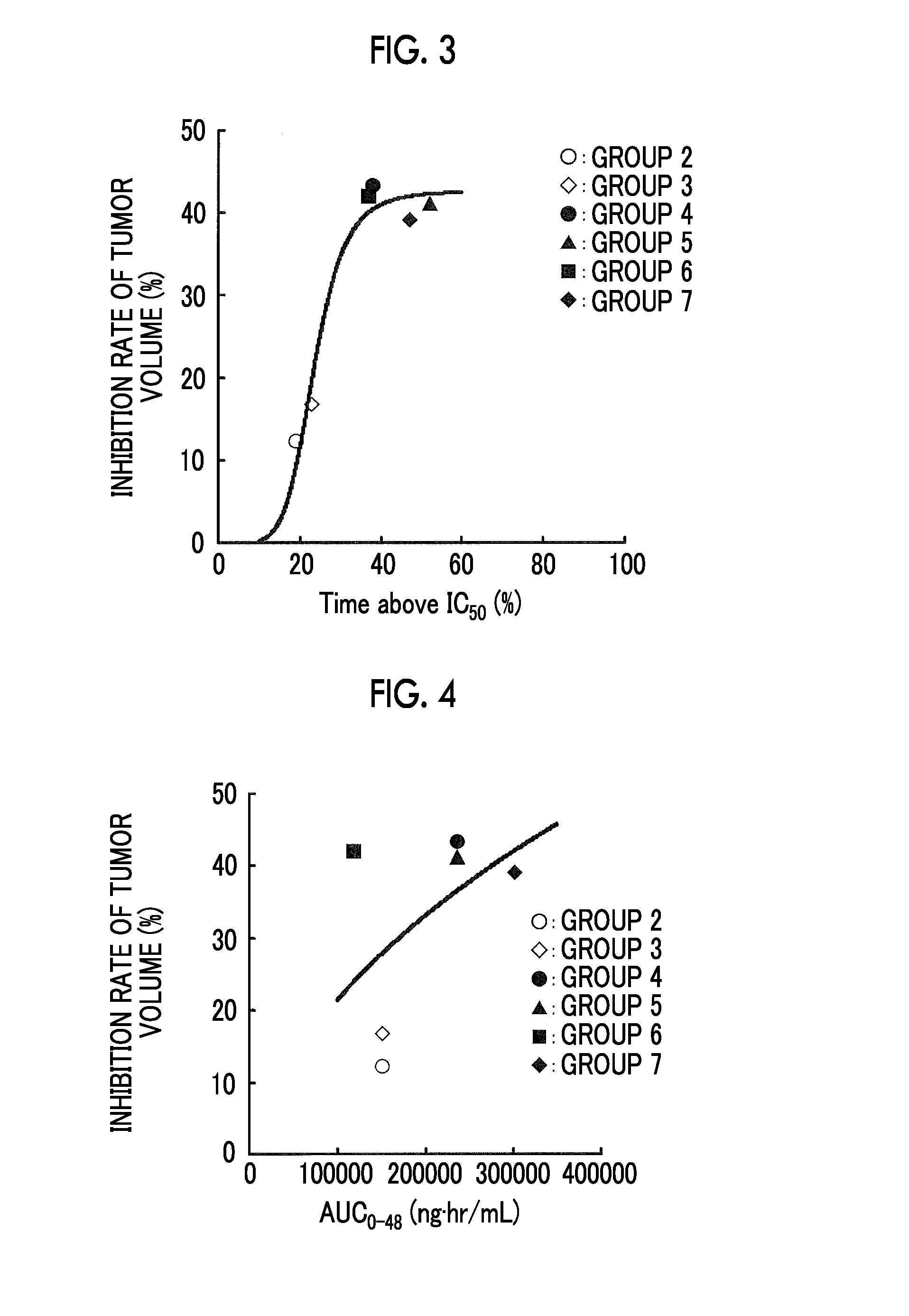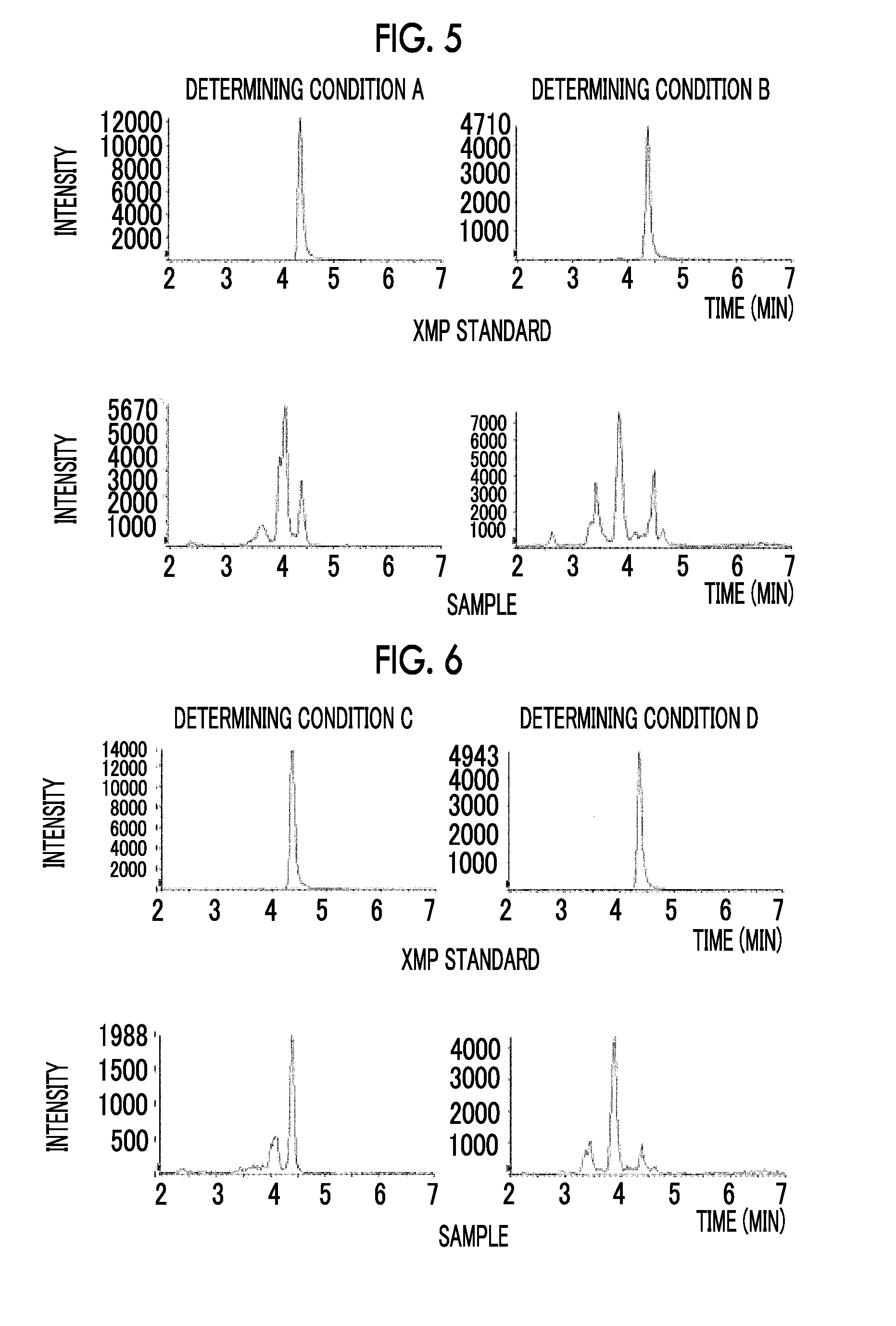Method and apparatus for predicting effective dose or sensitivity of 5-hydroxy-1h-imidazole-4-carboxamide, method for determining amount of xanthosine monophosphate, and treatment agent and method for treating myelodysplastic syndrome
a technology of xanthosine monophosphate and which is applied in the field of methods and apparatus for predicting effective dose or sensitivity of 5hydroxy-1h-imidazole-4-carboxamide, and method for determining amount of xanthosine monophosphate, and treatment agent and method for treating myelodysplastic syndrome. it can solve the difficulty of monitoring the effect of a therapeutic agent, the difficulty of retaining impdh in reversed-phas
- Summary
- Abstract
- Description
- Claims
- Application Information
AI Technical Summary
Benefits of technology
Problems solved by technology
Method used
Image
Examples
example 1
Cell Growth Inhibitory Activity of Compound A
[0209]A ¾ hydrate of Compound A was used as a test compound.
[0210]SKM-1 (available from National Institute of Biomedical Innovation JCRB Cell Bank) was used as a human myeloid leukemia cell line.
[0211]90 μL (5000 cells) of the human myeloid leukemia cell line SKM-1 was seeded onto a 96-well plate. 10 μL of a PBS solution of the test compound (0 μmol / L, 1 μmol / L, 3 μmol / L, 10 μmol / L, 30 μmol / L, 100 μmol / L, 300 μmol / L, 1000 μmol / L, 3000 μmol / L, or 10000 μmol / L in terms of Compound A) was added to the plate which was then incubated in 5% CO2 at 37° C. for 72 hours. 100 μL of CellTiter-Glo (manufactured by Promega) was added to each well to prepare a cell lysate.
[0212]The relative value of chemiluminescence intensity was calculated by a plate reader.
[0213]IC50 value of Compound A was 21.5 μmol / L (2.73 μg / mL in terms of Compound A). Compound A exhibited an excellent antiproliferative activity.
example 2
Drug Concentration Prediction by PK / PD Analysis (Pharmacokinetics / Pharmacodynamics Analysis)
[0214](1) Antitumor Effects of Compound A
[0215]A ¾ hydrate of Compound A was used as a test compound.
[0216]The SKM-1 cell was used as a human myeloid leukemia cell.
[0217]5.0×106 human myeloid leukemia cells were subcutaneously transplanted into the right abdomen flank of female nude mice (BALB / cAJcl-nu / nu) to form a subcutaneous tumor. On day 9 post-transplantation, animals were assigned into 7 groups, each consisting of 10 mice. Table 1 shows the composition of groups. From day 10 post-transplantation, a control solvent (0.5 w / v % methyl cellulose 400 aqueous solution, hereinafter referred to as “0.5% MC”.) or a test compound was intermittently administered orally (a total of five course in terms of 2 days dosing+four days washout as a course of drugs), and the tumor volume on day 39 post-transplantation was determined to evaluate the antitumor effects. The inhibition rate was calculated acc...
example 3
Quantitative Determination of XMP
[0226](1-1) 450 μL of blood taken from healthy individuals by heparinized blood collection, and 50 μL of a PBS solution were added to the tube, followed by stirring in an incubator at 37° C. for 8 hours.
[0227](1-2) 400 μL of methanol was added to 100 μL of the sample obtained in (1-1). After stirring with a vortex mixer, 400 μL of chloroform was added and stirred with a vortex mixer, followed by addition of 120 μL of ultrapure water. After stirring with a vortex mixer, the reaction solution was centrifuged at 4° C. and 10000×g for 15 min. 400 μL of the aqueous phase was recovered and added to an ultrafiltration tube, followed by centrifugation at 12° C. and 9200×g for 2 hours. The filtrates were combined and then dried under reduced pressure at 40° C. for 2 hours by using a centrifugal evaporator. After drying, the resulting product was stored in a freezer at −80° C.
[0228](1-3) The sample was dissolved in water, followed by centrifugation, and the su...
PUM
| Property | Measurement | Unit |
|---|---|---|
| mass spectrometry | aaaaa | aaaaa |
| ionic strength | aaaaa | aaaaa |
| liquid chromatography- | aaaaa | aaaaa |
Abstract
Description
Claims
Application Information
 Login to View More
Login to View More - R&D
- Intellectual Property
- Life Sciences
- Materials
- Tech Scout
- Unparalleled Data Quality
- Higher Quality Content
- 60% Fewer Hallucinations
Browse by: Latest US Patents, China's latest patents, Technical Efficacy Thesaurus, Application Domain, Technology Topic, Popular Technical Reports.
© 2025 PatSnap. All rights reserved.Legal|Privacy policy|Modern Slavery Act Transparency Statement|Sitemap|About US| Contact US: help@patsnap.com



